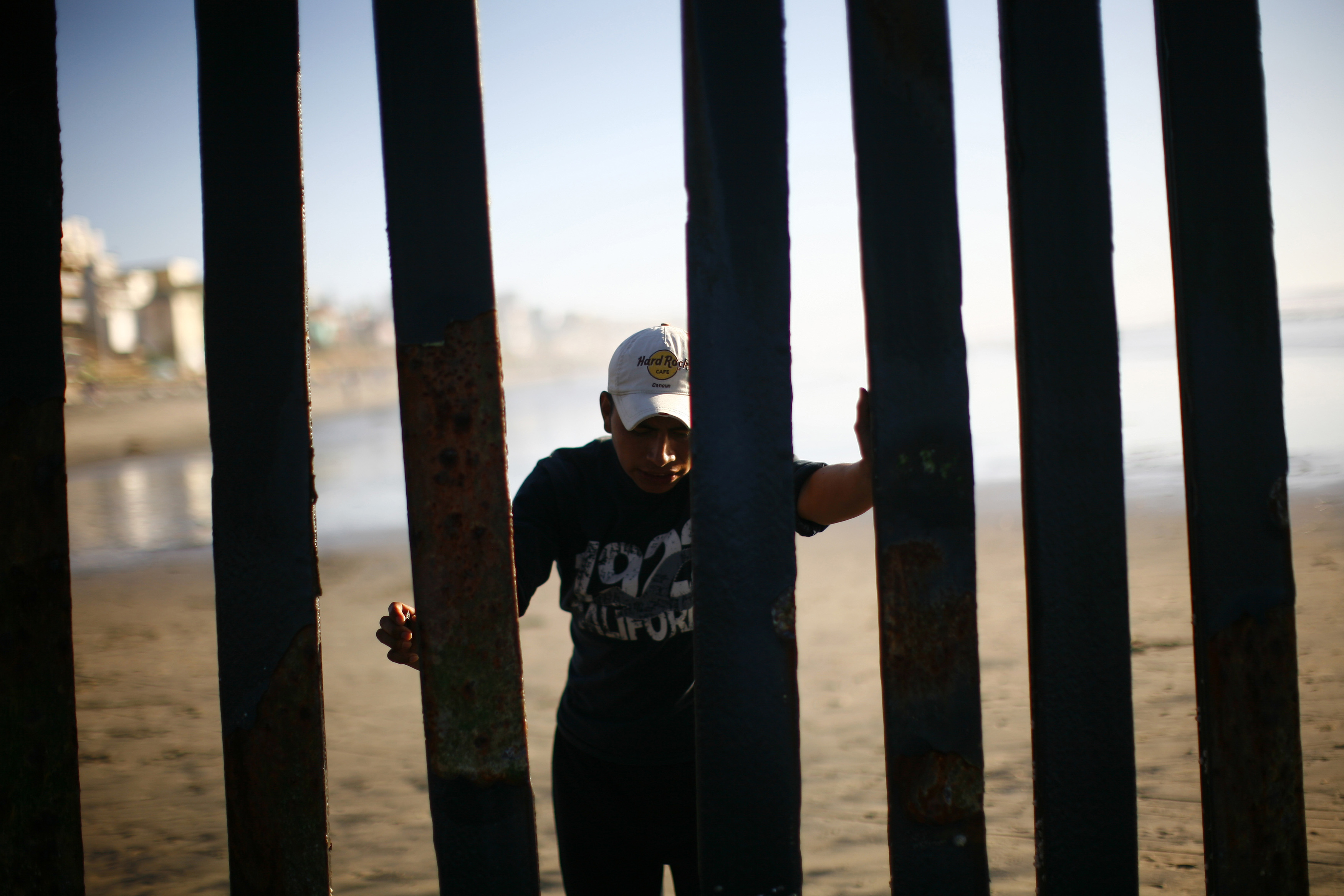The truth about America's border with Mexico
President-elect Trump has promised to build an "impenetrable" wall along the U.S.-Mexico border. Is it needed?

President-elect Trump has promised to build an "impenetrable" wall along the U.S.-Mexico border. Is it needed? Here's everything you need to know:
How is the border protected now?
About one-third of the 1,954-mile southern border has been fenced and walled off to keep out drug smugglers and illegal immigrants. A few dozen miles of 10-foot-high corrugated-iron fencing went up in the 1990s, but most of the barrier was erected following the passage of the 2006 Secure Fence Act, a response to a massive surge in illegal immigration from Mexico. These newer sections of the wall — concrete, 10 to 20 feet high, and often topped with razor wire — are mainly concentrated in border cities like San Diego, where illegal immigrants can easily disappear into the urban sprawl. About 1,300 miles of the border, which spans California, Arizona, New Mexico, and Texas, are either open or blocked by a single barbed-wire fence that can be quickly snipped through with a pair of $10 bolt cutters. These wall-free stretches, which are mostly in mountainous or desert areas, aren't entirely unprotected: Some 21,000 Border Patrol agents guard the entire border and use motion sensors, drones, and other high-tech equipment to detect intruders. Yet hundreds of immigrants still slip through every day. "When you secure one area," says Shawn Moran, vice president of the Border Patrol agent's union, "you push traffic to another."
The Week
Escape your echo chamber. Get the facts behind the news, plus analysis from multiple perspectives.

Sign up for The Week's Free Newsletters
From our morning news briefing to a weekly Good News Newsletter, get the best of The Week delivered directly to your inbox.
From our morning news briefing to a weekly Good News Newsletter, get the best of The Week delivered directly to your inbox.
How many people cross successfully?
An estimated 170,000 people eluded capture while crossing the border last year — roughly 46 percent of all those who attempted the journey, according to a leaked Department of Homeland Security report. That's down from 1.7 million people in 2005, when 64 percent escaped capture. The demographics of border crossers have changed dramatically in that time. A decade ago almost all of those apprehended were Mexican, but most now caught are trying to escape horrific drug-gang violence and social chaos in El Salvador, Honduras, and Guatemala. Many Central Americans hand themselves in as soon as they cross the border and request asylum, and wind up in holding centers for months. "We've turned into a detention agency," says Chris Cabrera, a Border Patrol agent. "We're doing jailer work and sometimes babysitting." With holding centers full, migrants are often given a court date and released; many never show up, and become part of the U.S.'s illegal immigrant population of more than 11 million people.
Why are fewer people crossing?
Additional border security has had an effect. The cartels that control most illegal entry routes from Mexico to the U.S. used to charge $1,500 per crossing. Now that the journey is more difficult, they demand $6,000 — too much for many would-be immigrants. The threat of federal prosecution is another key deterrent. In the early 1990s, the federal government prosecuted fewer than 4,000 people a year for re-entering the U.S. after being deported; last year, the Obama administration charged 70,000 people. Changing social and economic conditions in Mexico have also had an impact.
A free daily email with the biggest news stories of the day – and the best features from TheWeek.com
What's happened in Mexico?
A big drop in the birth rate, from seven children per woman in the 1960s to 2.2 today, has reduced the pool of potential migrants. And the U.S.'s slow recovery from the Great Recession, coupled with a strong economy in Mexico, has decreased the incentive for Mexicans to head north. In fact, more Mexican nationals are now leaving the U.S. than are entering the country. "We haven't seen that since the 1930s," says Ana Gonzalez-Barrera of the Pew Research Center. It's always possible, of course, that migration could resume at some point.
What is Trump's plan?
The president-elect has backed off his vow to wall off the entire border, and recently spoke of building a 30- to 55-foot-high precast concrete wall across 1,000 miles of the border; he said the rest of the border is essentially impassable because of mountains and "vicious rivers." Trump estimates that the bill would be about $10 billion. But that seems optimistic, given that the border's existing 650 miles of wall cost $7 billion; independent estimates suggest Trump's higher wall would cost $25 billion. Many experts believe that expanding the wall in remote areas wouldn't deter determined border crossers. "If you build a 20-foot fence," says Moran, the union official, "they build a 21-foot ladder."
Are there alternatives to the wall?
Border Patrol officials want 23 miles of extra wall to cover known crossing points and a massive increase in funding for the "virtual wall": the drones, cameras, and sensors that agents use to automatically locate and track intruders. President George W. Bush approved a border-length virtual wall in 2006, but the system was hopelessly ineffective — in windy conditions, it mistook trees for people. The project was shelved in 2011 after $1 billion had already been spent. Some experts think that rather than focusing on border crossers, the government should crack down on people who overstay their visas — a group that accounts for 40 percent of the U.S. illegal immigrant population. In the short term, Trump's election victory is expected to cause a spike in attempted illegal border crossings. "If you talk to [recent arrivals], they all know about President Trump, they all know about a wall," says Jim Darling, mayor of McAllen, Texas. The message, he says, is clear: "You better get over here before January and the swearing-in ceremony."
A treacherous journey
Empty water bottles. Rickety homemade ladders. Desiccated orange peel. Remote stretches of the U.S.-Mexico border are littered with detritus from attempted crossings. The journey, a days-long trek through the desert or mountains, holds many dangers. Temperatures reach 110 degrees, with little shade. There are poisonous snakes, spiders, and scorpions. People smugglers, known as coyotes, often abuse the women they're helping across the border. When immigrants reach the border, the coyotes instruct them to hike through ranchland to locations where they will be picked up by other smugglers — who sometimes don't show up. Several charities leave water bottles on migrant pathways, but anti-immigration groups often empty the bottles. More than 6,000 migrants have been found dead in the past 16 years; added security has led people to cross at ever more remote areas, so the death toll remains steady. "We keep waiting for it to slow down," says Greg Hess, chief medical examiner in Arizona's Pima County. "It doesn't seem to stop."
-
 Can Trump put his tariffs on stronger legal footing?
Can Trump put his tariffs on stronger legal footing?Today's Big Question Appeals court says 'emergency' tariffs are improper
-
 Film reviews: The Roses, Splitsville, and Twinless
Film reviews: The Roses, Splitsville, and TwinlessFeature A happy union devolves into domestic warfare, a couple's open marriage reaps chaos, and an unlikely friendship takes surprising turns
-
 Thought-provoking podcasts you may have missed this summer
Thought-provoking podcasts you may have missed this summerThe Week Recommends Check out a true crime binger, a deep-dive into history and more
-
 Ghislaine Maxwell: angling for a Trump pardon
Ghislaine Maxwell: angling for a Trump pardonTalking Point Convicted sex trafficker's testimony could shed new light on president's links to Jeffrey Epstein
-
 The last words and final moments of 40 presidents
The last words and final moments of 40 presidentsThe Explainer Some are eloquent quotes worthy of the holders of the highest office in the nation, and others... aren't
-
 The JFK files: the truth at last?
The JFK files: the truth at last?In The Spotlight More than 64,000 previously classified documents relating the 1963 assassination of John F. Kennedy have been released by the Trump administration
-
 'Seriously, not literally': how should the world take Donald Trump?
'Seriously, not literally': how should the world take Donald Trump?Today's big question White House rhetoric and reality look likely to become increasingly blurred
-
 Will Trump's 'madman' strategy pay off?
Will Trump's 'madman' strategy pay off?Today's Big Question Incoming US president likes to seem unpredictable but, this time round, world leaders could be wise to his playbook
-
 Democrats vs. Republicans: which party are the billionaires backing?
Democrats vs. Republicans: which party are the billionaires backing?The Explainer Younger tech titans join 'boys' club throwing money and support' behind President Trump, while older plutocrats quietly rebuke new administration
-
 US election: where things stand with one week to go
US election: where things stand with one week to goThe Explainer Harris' lead in the polls has been narrowing in Trump's favour, but her campaign remains 'cautiously optimistic'
-
 Is Trump okay?
Is Trump okay?Today's Big Question Former president's mental fitness and alleged cognitive decline firmly back in the spotlight after 'bizarre' town hall event